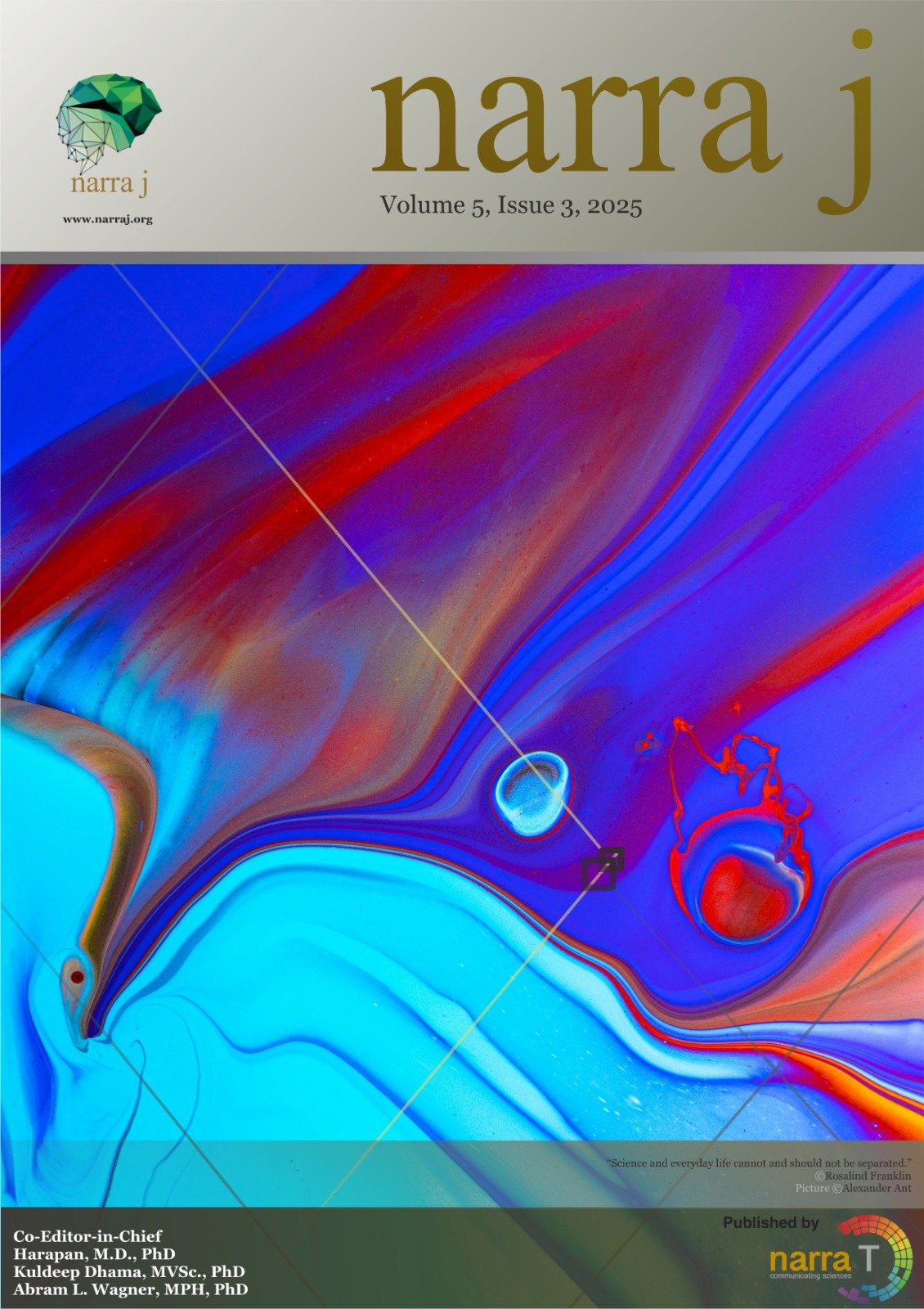Cerebral artery stenosis and neurological outcomes after anticoagulant and antiplatelet therapy in acute ischemic stroke: A digital subtraction angiography-based study in Indonesia
DOI:
https://doi.org/10.52225/narra.v5i3.2919Keywords:
Acute ischemic stroke, anticoagulant, antiplatelet, NIHSS, cerebral artery stenosisAbstract
Acute ischemic stroke (AIS) is a leading cause of morbidity and mortality, with cerebral artery stenosis serving as an important prognostic factor. While revascularization therapies benefit selected patients, most rely on pharmacological strategies. However, evidence regarding the effect of sequential anticoagulant–antiplatelet therapy on vascular stenosis and neurological outcomes remains limited. The aim of this study was to evaluate changes in cerebral artery stenosis, assessed using digital subtraction angiography (DSA), and neurological deficits, assessed by the National Institutes of Health Stroke Scale (NIHSS), in patients with first-onset AIS treated with anticoagulant and antiplatelet therapy. A prospective cohort study was conducted involving 35 patients who received low-molecular-weight heparin or warfarin for seven days, followed by 90 days of oral antiplatelet therapy (aspirin or clopidogrel). Sixteen patients consented to repeat DSA at 90 days. Among these, the median stenosis decreased from 44.5% (30–90%) to 44.0% (20–90%) (p=0.003). In the full cohort (n=35), the median NIHSS improved from 10 (5–17) at baseline to 9 (2–14) at 90 days (p<0.001). Correlation analysis demonstrated a positive but non-significant association between stenosis reduction and NIHSS improvement (r=0.474, p=0.064). These findings suggest that sequential anticoagulant–antiplatelet therapy in first-onset AIS was associated with a modest but statistically significant reduction in arterial stenosis and meaningful improvement in neurological function. Although vascular and clinical outcomes were not significantly correlated, the observed trend highlights the importance of structured pharmacological therapy and the potential role of serial vascular imaging in follow-up care.
Downloads
Downloads
How to Cite
Issue
Section
Citations
License
Copyright (c) 2025 Nasrul Musadir, Syahrul Syahrul, Imran Imran, Aidil Fiqri, Dini R. Danial

This work is licensed under a Creative Commons Attribution-NonCommercial 4.0 International License.



